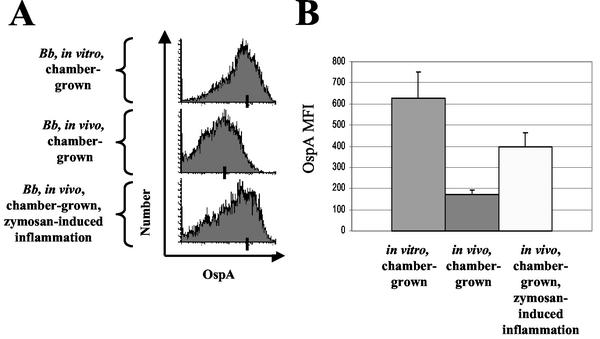FIG. 4.
FACS profile of chamber-grown B. burgdorferi under in vitro, in vivo, and in vivo-inflamed conditions. Dialysis chambers were prepared containing low-passage B. burgdorferi N40. Chambers were either placed in vitro at 33°C, implanted in vivo, or implanted in vivo with an intraperitoneal injection of zymosan to elicit peritoneal inflammation. After 48 h, chambers were removed and spirochetes were syringe extracted from the chambers, counted, and stained for flow cytometry. After gating on the flagellin-positive population, we determined the MFI of OspA in this population. (A) OspA staining of flagellin-positive population of in vitro, in vivo, and in vivo-inflamed cultured spirochetes. Bars indicate the average MFI for each group. (B) The average of the MFIs determined by flow cytometry for B. burgdorferi populations extracted from in vitro chambers (n = 3); host-adapted, in vivo chambers (n = 7); and host-adapted during inflammation chambers (n = 7). The data represent the average of the values determined for each chamber, and the error bars indicate the SEM. The difference between the in vivo-inflamed group and the in vivo control group is significant (P = 0.007, Student t test). The data represent the results of three independent experiments.

